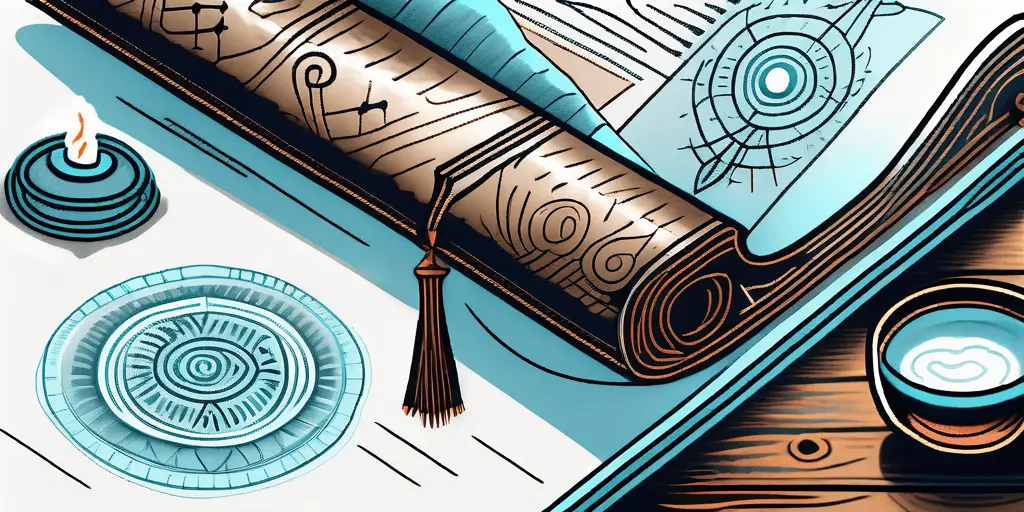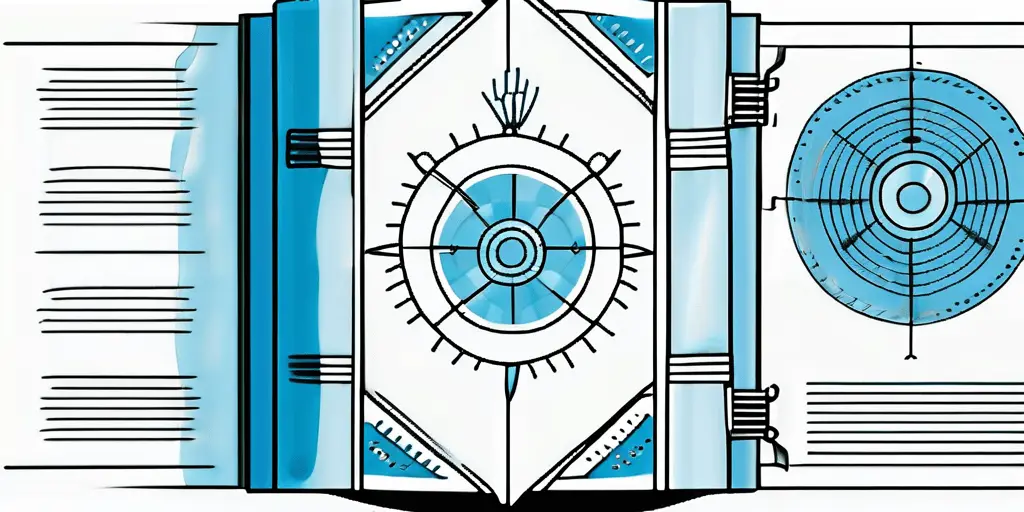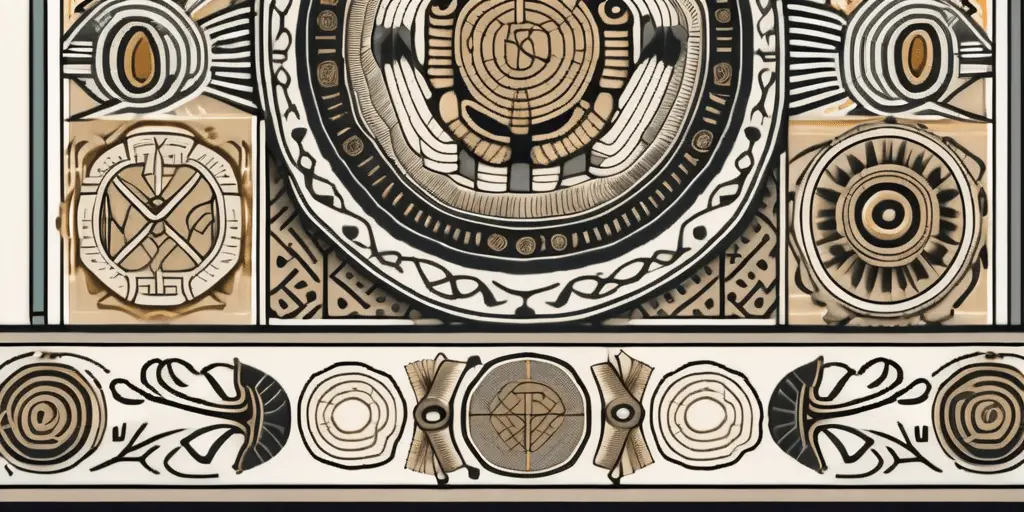Ah, the mysterious codex. It’s a term that may not be familiar to everyone, but don’t worry – I’ve got you covered. In this comprehensive guide, we delve into the world of codices, exploring their origins, structures, significance, and potential future applications. So, let’s dive right in and uncover the secrets of the codex!
Understanding the Basics of a Codex
Definition and Origin of Codex
First things first, let’s define what precisely a codex is. In its simplest form, a codex is a book – but not just any book. It is a specific type of book characterized by its bound pages. Unlike its predecessor, the scroll, a continuous piece of parchment or papyrus, the codex comprises separate sheets of material on one side. This revolutionary book format has its roots in ancient times.

The term “codex” comes from the Latin word “caudex,” which originally referred to a block of wood. This term was later adopted to describe the wooden tablets covered in wax that the Romans used for writing before the codex, as we know it today, emerged. The transition from scrolls to codices began around the 1st century AD, gaining popularity in early Christian communities for their practicality and ease of use.
Differentiating Codex from a Scroll
Now, you might be wondering, what sets the codex apart from the traditional scroll? Apart from their noticeable physical differences, the codex and the scroll differ in functionality. While the scroll was primarily used for recording lengthy texts, the codex introduced a more convenient way to access and navigate written content. With the codex, you could easily flip to a specific page or section, unlike the cumbersome task of rolling and unrolling a scroll.
Another key advantage of the codex over the scroll was its storage efficiency. Codices could be stacked neatly on shelves, allowing for easier organization and retrieval of information. This shift in book format revolutionized the way knowledge was stored and accessed, and paved the way for the development of more sophisticated binding techniques and decorative book arts.
The Structure of a Codex
Components of a Codex
So, what exactly goes into making a codex? Let’s take a closer look. A typical codex consists of several key components. Firstly, we have the cover, which provides protection and acts as a gateway to the treasure trove of knowledge within. Then, we have the spine, connecting the cover to the pages and allowing the codex to lay flat when opened. Lastly, we have the pages themselves, where the real magic happens.

You’ll find text, illustrations, diagrams, and anything else deemed important or valuable enough to be documented within the pages. The arrangement of content can vary from codex to codex, depending on the purpose or subject matter. Some codices are organized in chapters, while others adopt a more fluid and interconnected structure.
The cover of a codex is not just a simple piece of material. It can be intricately designed with ornate patterns, embossed symbols, or even precious metals and gems to signify the importance of the knowledge held within. The spine, often reinforced with ridges or bands, provides structural support and serves as a canvas for decorative elements or inscriptions.
The Process of Assembling a Codex
Creating a codex is no easy task. It requires a meticulous and time-consuming process. The pages, usually made of parchment or paper, must be carefully selected and prepared. Then, they are folded, trimmed, and arranged in sequential order. Finally, the bound pages are reinforced with stitching or gluing to ensure durability. It’s a labor of love that brings together the craftsmanship of bookmakers and the creativity of content creators.
The process of assembling a codex involves technical skills and artistic sensibilities. Bookmakers may employ techniques such as gilding, illumination, or calligraphy to enhance the beauty and readability of the text. Each codex is a unique masterpiece, reflecting the cultural, historical, and aesthetic values of its time.
The Evolution of the Codex
The Codex in the Ancient World
The codex didn’t just appear out of thin air. Its evolution can be traced back to the ancient world. While the scroll reigned supreme for centuries, the codex slowly gained popularity as a more practical and efficient alternative. Early codices can be found in civilizations such as the Romans and the Greeks, who recognized their advantages in terms of convenience and accessibility.

One fascinating aspect of the transition from scrolls to codices was its impact on the organization of information. Unlike scrolls, which had to be rolled and unrolled to access specific sections, codices allowed for quicker navigation through the use of pages. This innovation revolutionized how knowledge was stored and accessed, laying the foundation for the modern book format we are familiar with today.
The Codex in the Middle Ages
Fast-forward to the Middle Ages, and the codex became the dominant book form in Europe. Monasteries played a pivotal role in preserving and producing codices during this period. The craftsmanship of medieval scribes and illuminators elevated codex-making to new heights, with intricately decorated pages that showcased beauty and knowledge.
One of the most significant contributions of the Middle Ages to codex production was the development of scriptoria, dedicated spaces within monasteries where scribes meticulously copied and illustrated manuscripts. These scriptoria were not only centers of transcription but also hubs of creativity, where monks adorned pages with intricate designs and illustrations, transforming codices into works of art that transcended their utilitarian purpose.
The Modern Interpretation of a Codex
In our modern world, the codex has retained its relevance and importance. While digital alternatives have emerged, the tactile sensation of holding a physical codex and turning its pages still holds a special place in the hearts of book enthusiasts. Whether exploring ancient manuscripts or immersing oneself in a captivating novel, the codex remains a companion and a gateway to new worlds.
Despite the rise of e-books and digital libraries, the allure of the codex lies not only in its content but also in its physical presence. The paper’s weight, the cover’s texture, and even the smell of aged parchment all contribute to the sensory experience of reading a codex. In a world inundated with screens and pixels, the codex stands as a tangible link to the past, a reminder of the enduring power of the written word in a rapidly evolving technological landscape.
The Significance of the Codex
The Codex in Religious Contexts
Religion and the codex have a deep connection. Many religious texts, such as the Bible, the Quran, and the Torah, have been preserved in codex form. This ensured their longevity and allowed for easier study, reference, and dissemination. The codex has played a pivotal role in maintaining and disseminating religious teachings throughout history.
One fascinating aspect of the codex in religious contexts is its symbolic significance. The act of physically turning the pages of a codex can be seen as a form of reverence and engagement with the sacred text. The tactile experience of interacting with the codex adds a layer of intimacy to the reading and interpretation of religious scriptures, deepening the spiritual connection for believers.
The Codex in Academic Research
Academic researchers owe a debt of gratitude to the codex. Its navigational flexibility and organized format have made it a crucial tool for scholars seeking to explore and analyze vast amounts of information. From ancient philosophy to scientific breakthroughs, the codex has been a faithful companion in the pursuit of knowledge.
The evolution of the codex format over time has had a profound impact on academic research. The transition from scrolls to codices marked a significant shift in how information was organized and accessed. This shift revolutionized how scholars conducted their research, paving the way for the development of new disciplines and methodologies in academia.
The Future of the Codex
Digital Codices and the Internet Age
As we embrace the digital age, the codex has adapted to keep up with the times. Digital codices offer the convenience of portability and accessibility through electronic devices. With just a few taps, we can carry an entire library of codices. As technology advances, who knows what exciting possibilities lie ahead for the future of the codex?
In addition to the convenience of digital codices, integrating multimedia elements such as audio, video, and interactive features has revolutionized the reading experience. Imagine flipping through a digital codex and listening to the author narrate a passage or watching a video that complements the storyline. The fusion of technology and traditional storytelling in digital codices opens up a world of immersive possibilities for readers of all ages.
The Codex in Contemporary Art and Literature
Finally, the codex continues to inspire and be reimagined in art and literature. Artists and authors experiment with different formats, materials, and storytelling techniques to create unique and thought-provoking codices. The marriage of visual art and the written word within the pages of a codex opens up new realms of creativity and expression.
From illuminated manuscripts to avant-garde artist books, the codex is a canvas for creativity and innovation in contemporary art and literature. Artists push the boundaries of traditional bookmaking by incorporating unconventional materials like metal, fabric, and even organic elements to craft visually stunning and conceptually rich codices. Each turn of the page reveals not just words, but a visual and tactile feast for the senses, inviting readers to explore the intersection of art and literature in a tangible form.
And there you have it – a comprehensive guide to the enigmatic world of the codex. From its humble origins to its everlasting impact, the codex remains an invaluable knowledge and imagination treasure trove. So, next time you feel the weight of a codex in your hands, remember the centuries of history and stories it holds within its pages. Happy reading!
As we reflect on the evolution of the codex and its transformation from ancient manuscripts to digital formats, it’s clear that the preservation of knowledge has always been paramount. In the same vein, protecting your business’s digital expertise and assets is critical in our interconnected world. With its veteran-owned heritage and cybersecurity expertise, Blue Goat Cyber stands ready to defend your digital domain. Whether safeguarding medical devices against cyber threats or ensuring your operations meet HIPAA and FDA standards, our team is equipped to provide the cybersecurity solutions you need. Contact us today for cybersecurity help, and let us help you write your history of digital security success.
